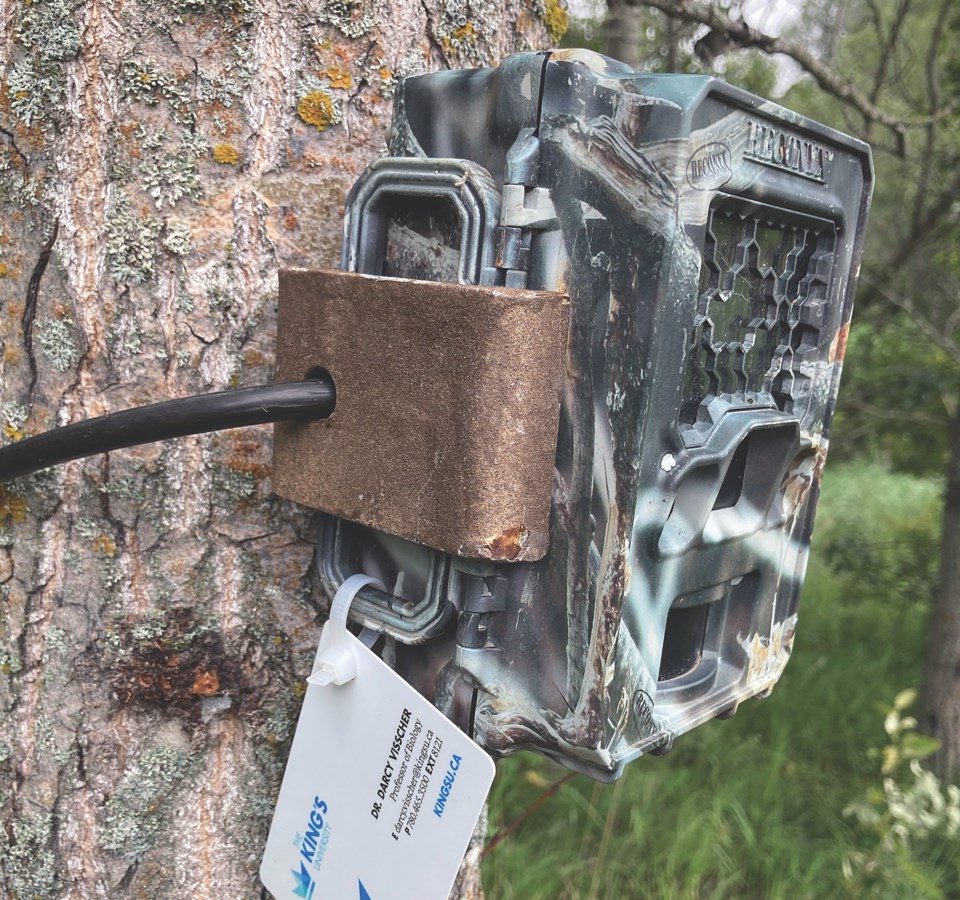ATHABASCA – Anyone using the Landing or Muskeg Creek trail systems next week may notice new trail cameras for an academic study aimed at tracking how local wildlife, in particular mule deer, use the paths in and out of town.
In a June 1 interview, Dr. Darcy Visscher, who’s an Assistant Professor of Biology at King’s University in Edmonton and specializes in urban ecology and wildlife, said that he had been approached by Town of Athabasca Coun. Ida Edwards a few years prior to do a study, but the COVID-19 pandemic delayed their plans.
“We managed to scare up a little grant help ($3,000), so the idea is to monitor wildlife that are moving in the recreational park areas that lead into the town, and to try and understand what’s all out there, with an eye to the deer,” said Dr. Visscher.
Part of the concern on his end is how friendly the deer have been; in previous areas, Dr. Visscher says that overly friendly deer populations can quickly become a divisive issue for a town once the early excitement starts to wear off.
“Most of my work has been done in the City of Edmonton, and in a recreational area just east of Edmonton outside of Elk Island National Park. I think what you’re seeing here is the initial stages where people are rightfully excited to see wildlife in their backyard. For some people, that’s the perfect thing, and they’re excited about it, and they want to see it and they encourage it. For others, it’s more of a nuisance with the deer eating their strawberries or their roses. That’s when it tends to get divisive.”
Besides tracking how the deer use the trails, Dr. Visscher will be looking to see how contact with humans has changed their other habits; deer are oftentimes active at night, so any disruption to that will hopefully be tracked by the study.
The year-long project is a collaboration between four local stakeholder groups: the Town of Athabasca, the Athabasca Watershed Council, Landing Trail Intermediate School (LTIS), and the Crooked Creek Conservancy. Dr. Visscher will be counting on their support for some of the legwork after all the footage has been obtained.
“We’re hoping to engage the residents of the town through social media updates using timely images of wildlife from cellular based cameras,” said Dr. Visscher.
The study is going to have four deployments, with the professor and some local volunteers going out every three months to collect the images, change out batteries in the cameras, and begin the lengthy process of going through the data.
The study isn’t costing the town anything, with the cameras coming from Dr. Visscher’s collection, but he is hoping that the town will “pay it forward” by being engaged and willing participants.
“I want to encourage community members to tell me where, when, and how many deer they see. That’s one of the ways I want to get the community involved, to help with the how many are there question, since that’s not what the study is looking at.”
One of Dr. Visscher’s business cards will be attached to each of the trail cameras, and while they will be counting how many people are using to trails to try and determine the human impact on wildlife, a computer program will automatically blur out faces to protect people’s privacy.



